Pulsara Around the World - 2025 Recap and January 2026
December Recap After an incredibly busy events year with 102 conferences, trade shows, and sponsorships, December was on the slower side for us, with...
10 min read
 Team Pulsara
:
Jul 17, 2020
Team Pulsara
:
Jul 17, 2020
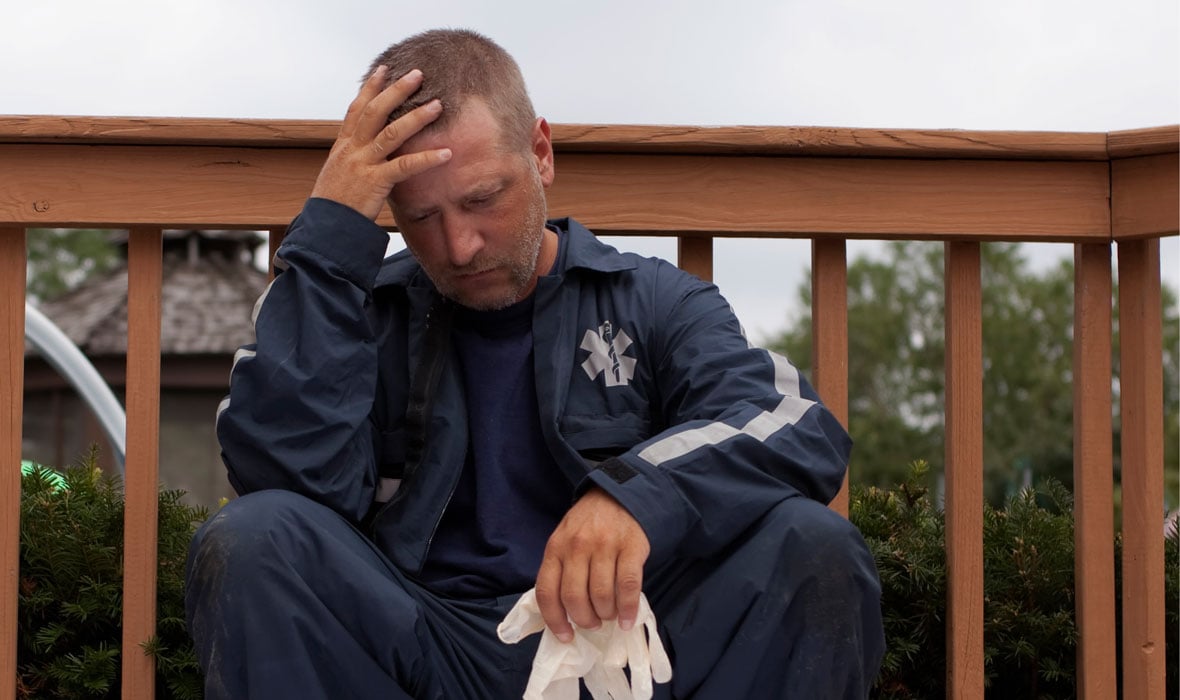
There’s one thing in EMS that we don’t often talk about but can all relate to: making stupid decisions.
What causes us to do stupid things, and what can we do to avoid those risks? Pulsara’s CMO Kris Kaull recently made a remote guest appearance on The MCHD Paramedic Podcast to talk with Dr. Casey Patrick, Assistant Medical Director for the Montgomery County Hospital District EMS service, about what we can do to better handle the situations that put us at the greatest peril of making mistakes. Read on for the highlights of the discussion, or listen to the full recording below.
Citing a discussion between Shane Parrish and Adam Robinson on the Farnam Street blog, Casey was quick to define stupidity. “It's not [being] dumb; it's not a lack of information; it's not the opposite of smart. The definition that I thought was really poignant in the article is: stupidity is the act of overlooking or dismissing crucial information, basically when it's staring you in the face.”
 Kris agreed. “It’s when you're walking towards a door and you go to go in, and you hit the door with your face, because it clearly says 'pull'—and you thought that you pushed to go in. The sign's right there. It's very obvious, but where were you at that time? Your mind was distracted, or you've always pushed other doors open, so you assumed this door would also push open. Yet that information is right in front of your face. That's where we say, ‘Wow, we missed that piece of critical, critical insight that would've helped us with our patients.’ We were pushing instead of pulling when the sign right in front of us told us exactly what to do.”
Kris agreed. “It’s when you're walking towards a door and you go to go in, and you hit the door with your face, because it clearly says 'pull'—and you thought that you pushed to go in. The sign's right there. It's very obvious, but where were you at that time? Your mind was distracted, or you've always pushed other doors open, so you assumed this door would also push open. Yet that information is right in front of your face. That's where we say, ‘Wow, we missed that piece of critical, critical insight that would've helped us with our patients.’ We were pushing instead of pulling when the sign right in front of us told us exactly what to do.”
Casey went on to outline the seven factors that Parrish and Robinson believe put us most at risk of overlooking crucial information. These factors exponentially increase the chances of making a stupid decision: rushing, operating outside your normal environment, the pressure of a group, the presence of an expert, tasks that require intense focus, information overload, and fatigue.
And while these factors apply in many situations, they are particularly applicable to EMS. “I mean, EMS, emergency department—it sounds like the job description, right?” said Casey. “It sounds like what we're supposed to do and where we're supposed to be working.”
Kris and Casey worked through each of the risk factors, offering their experience on how to best mitigate the risks when many of them are inherent to the environments that EMS works in.
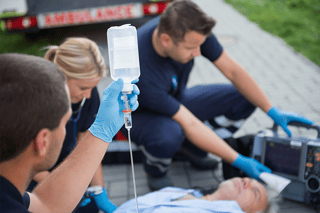 Time-sensitive situations where efficiency is of utmost importance create the perfect conditions for the first risk factor: rushing. And while it’s important to move with intention, said Kris, rushing leads to disorganization and mistakes.
Time-sensitive situations where efficiency is of utmost importance create the perfect conditions for the first risk factor: rushing. And while it’s important to move with intention, said Kris, rushing leads to disorganization and mistakes.
“I associate the word 'rushed' with chaos,” said Kris. “So instead of being rushed with chaos and in your mind trying to remember everything, I put everything into a system: 'I'm going to go down. Pilot's checking weather. I'm going to open up the door to start moving the helicopter out. I have all my gear laid out exactly where I need it.' I'm writing down, I'm coordinating. One of the things that I did for years working both on a helicopter as well as on the ambulance is that I would plan for that day and I would plan before we were going on the call. Some of the simple things we do are truck checks and making sure all our equipment is ready. We don't do that on the scene. We do that as soon as we get on shift. I was really regimented about laying out all my stuff: my helmet, my jackets, my gloves. I would lay them out in a specific order. I would have a list of what I would go through every single time.”
“And I would extrapolate that maybe a little bit away from the operational side to the clinical side,” added Casey. “If you haven't thought about delayed sequence intubation, if you have no checklist, you're just randomly grabbing factoids and different practice patterns out of your brain, it's going to be chaos. Checklists don't help if you rush. We have to slow down, be intentional and use similar language, repetitive language, so that it's not chaotic.”
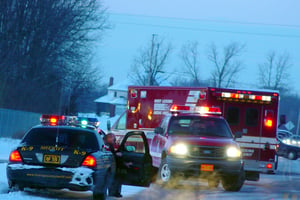 Operating outside of a normal, stable environment is practically the definition of Emergency Medical Services. From strokes to car crashes to severe illness, every scenario is different, and there are thousands of different factors that go into making every situation unique. So, Kris asked, what can we do to help contain, control, or limit that area and mitigate the risk of mistakes caused by the unfamiliarity?
Operating outside of a normal, stable environment is practically the definition of Emergency Medical Services. From strokes to car crashes to severe illness, every scenario is different, and there are thousands of different factors that go into making every situation unique. So, Kris asked, what can we do to help contain, control, or limit that area and mitigate the risk of mistakes caused by the unfamiliarity?
“We know that we're going to be time-challenged. We know that we're going to be uncomfortable,” Casey responded. “And every situation for the most part is going to be a new one. So these [situations] scream out for structure, for delegation, for checklist utilization in a methodical approach. If you are pulling your care plan out of thin air every single time, you're going to make mistakes. But if you approach each chest pain with a similar differential…you use your same patterns over and over again. Once you verbalize those [patterns] and have a solid framework or structure to your care, the new environment that you're going to find yourself in on each call is going to be less dangerous.”
Kris cited Atul Gawande’s book The Checklist Manifesto to explain why checklists are vital for complicated situations. “We don't really need a checklist on the simple things, like opening or closing a door. We can't put a checklist on the complex. But what are the things that we can do that are complicated? Because there's a lot of moving pieces, but they're pretty standard and they're consistent. And if we do the same thing each way, it's going to minimize all those variables.”
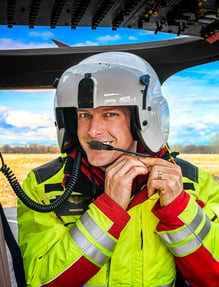 Many in EMS might complain about checklists, said Casey, but the purpose is not to reduce procedures to “cookbook medicine”; rather, it’s meant to standardize the routine parts of the process and free the mind up to focus on absorbing the unique aspects of the patient’s situation.
Many in EMS might complain about checklists, said Casey, but the purpose is not to reduce procedures to “cookbook medicine”; rather, it’s meant to standardize the routine parts of the process and free the mind up to focus on absorbing the unique aspects of the patient’s situation.
“Pilots go through the same pre-takeoff checklist no matter if it's bluebird or storming, no matter if it's a 45-minute flight or a transatlantic flight. They don't cut corners with their pre-flight prep. I think we get into the same issue. It's not a bad airway until it’s what? A bad airway. If you haven’t completed your pre-procedure prep and organized your framework and briefed your team, you can't go back and do that once there's turbulence. So I think we have to be humble enough to know that yes, we know how to intubate, but that checklist is there to help us. It's there to help us provide a framework. It's not there to tell you what to do.”
Kris took it a step further, suggesting that checklists actually help free up mental space for handling the unique aspects of the patient’s care. “One of my pilots is a good friend of mine—he’s a commander with the US Navy. And he was just astonished at the fact that we tried to stuff everything into our brains and memorize it. He's like, ‘Man, we are in such a checklist culture in aviation that it just seems that you guys are loose cannons.’ I mean, he actually looked at it as negligent. Where he's like, ‘I have checklists to make sure the basics are done, which frees up my mind and I'm not being overloaded. I can focus on flying the helicopter during an emergency. That's what I need to do. I don't need to remember XYZ emergency. I can look at the list and follow those steps. I need to navigate and aviate this helicopter.’ We need to free up our mind from all these other things that we can memorize so that we can actually treat the patient.”
It’s interesting how the presence of other people can add many variables into a situation, and in many cases increase mistakes. The third and fourth factors deal with how group dynamics contribute to overlooking important information that you might not have otherwise.
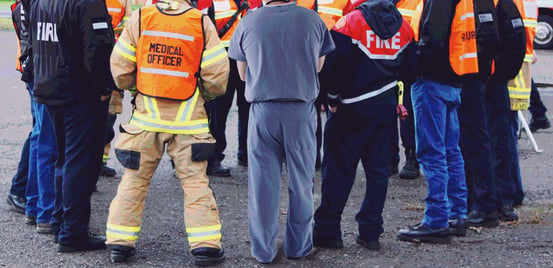
Kris shared two stories to demonstrate the point. “I’m based in Montana, and we have a snow science school. One of the TEDx talks a couple of years ago was from one of the avalanche experts. He spoke on groupthink and group mentality. There was an avalanche where one of his students—who, for all intents and purposes, knows all about avalanche safety and control—was ultimately killed when they triggered an avalanche doing back-country skiing. They went back to human risk factors and what this group ended up doing. When they were all experts and they were heading up there—we're just extrapolating, but [the student] may have felt: ‘I wouldn't have gone this far if I wasn't with people that aren't as good as I am or have this knowledge.’ But because she was with people who she thought were better than her or as good as her, and if they felt confident, then ‘Clearly, I might be missing something about this area.’ And they ended up going further out than they probably would have had they not been in a group.
"But it's interesting, because then I took that to EMS and I said, you know what, when I'm with a group of people I know, I can tend to be less careful and vigilant. Emily, Matt, and I flew together for many, many years. We worked well together and had our routines down. And then I would work a shift where I would have a brand-new pilot and/or a brand-new nurse, or maybe I covered a different base, and my entire crew was new. Well, I'd double-check everything they were doing. When the pilot was doing the pre-flight checks, I would double-check her or him. If my nurse was getting ready to push the medication, I would be super on top of double-checking those dosages. As I was listening to that TEDx talk about the avalanche, I'm like, 'I actually have gotten complacent with the group that I know. I'm assuming. I know their skill set, so I assume that they're doing okay.' That gets us to fall into these areas where if we all are making errors or can make errors and we all could be in a rush or outside our normal environment or in this group. The team that you're most comfortable with is where I always have that tingling or that sixth sense where we should probably be thinking about this and double-checking each other and even being more vigilant in that group."
Casey agreed. “If you're surrounded by people you trust, sometimes you can be a little more lax and a little less exacting. And that's probably not a great habit to be into.”
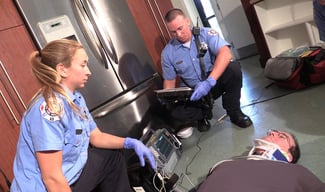 The next two risk factors cover situations that require intense focus and scenarios—very common in EMS—that involve an overload of information. For both of these factors, Casey reiterated the importance of using checklists, delegation, and double-checking the process in order to free up the mind for making more patient-specific medical decisions. “Information overload involves a skill of sifting and sorting that I don't know how to teach. I've kind of struggled with that. It's one I think comes with experience. You've got to gather all that information. You've got to sort through the junk. Sometimes, though, when we talk about the stupid part of overlooking or dismissing crucial information, one that comes up over and over … is the vital signs. I use this all the time, half joking; but we don't call them the 'kind of important signs' or the 'somewhat important signs' or the 'every now and then, these are useful' signs. They're called the vital signs, and those should be what directs our care from the start. Things like diaphoresis, power, altered mental status, those big exam findings that are really unassailable,” he said. “So sift and sort, delegate, use your checklist. The things we've already talked about are going to help us with information overload.”
The next two risk factors cover situations that require intense focus and scenarios—very common in EMS—that involve an overload of information. For both of these factors, Casey reiterated the importance of using checklists, delegation, and double-checking the process in order to free up the mind for making more patient-specific medical decisions. “Information overload involves a skill of sifting and sorting that I don't know how to teach. I've kind of struggled with that. It's one I think comes with experience. You've got to gather all that information. You've got to sort through the junk. Sometimes, though, when we talk about the stupid part of overlooking or dismissing crucial information, one that comes up over and over … is the vital signs. I use this all the time, half joking; but we don't call them the 'kind of important signs' or the 'somewhat important signs' or the 'every now and then, these are useful' signs. They're called the vital signs, and those should be what directs our care from the start. Things like diaphoresis, power, altered mental status, those big exam findings that are really unassailable,” he said. “So sift and sort, delegate, use your checklist. The things we've already talked about are going to help us with information overload.”
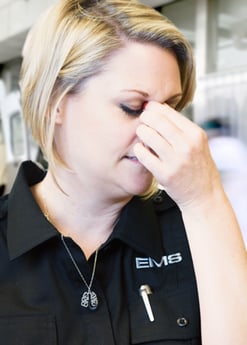 Physical and emotional fatigue are almost impossible to avoid in EMS. Long shifts, irregular hours, and intense situations pile up, and according to Casey, there comes a point where you have to know your limits. “At MCHD here, we have no-questions-asked rest time if you need it. And that's there for a reason. It's there because we know there's a point where it becomes unsafe to continue working. You wouldn't want your family member cared for by someone who was snoozing or had been up for 29 straight hours.”
Physical and emotional fatigue are almost impossible to avoid in EMS. Long shifts, irregular hours, and intense situations pile up, and according to Casey, there comes a point where you have to know your limits. “At MCHD here, we have no-questions-asked rest time if you need it. And that's there for a reason. It's there because we know there's a point where it becomes unsafe to continue working. You wouldn't want your family member cared for by someone who was snoozing or had been up for 29 straight hours.”
Kris recommended two things to combat physical fatigue. “The most two important things we need to do is be well-fed and well-rested. We just make better decisions. We make better decisions when we're out with our friends. We make better decisions as a family. How can we not make better decisions when we're well-rested and well-fed, when we're taking care of patients?”
On the emotional side, Kris noted, it’s important to remember that every person is different and deals with traumatic events differently. “We've all experienced a level of burnout. We've all gotten frustrated or bitter. We've all had other life factors that have added on top of that. So for those people that are listening: you're not alone.”
“This job is tough,” said Casey. “Those pediatric arrests, mass casualty incidents, drowning, those are tough to be a part of. And debrief, talk, counseling, all those things are available and they're beneficial. There's no reason to tuck all that inside. It can just metastasize.”
“I think there are good ways to deal with that,” Kris continued. You listed a couple of them: debriefing, talking, counseling and physical activity. Walking, running, exercising. And then there's poor ways that we are really good at in EMS of taking care of this stuff. Alcohol. Fast food. Not sleeping, and on, and on, and on. They're all outlets. And choosing the more positive ones for our body and our health are going to help us in the long run.”
Casey pointed out that while we’re good at helping others establish positive habits, we don’t always hold ourselves to them. “What we do for our kids? ‘Get in bed early. You get a good dinner, you need to get a good night's sleep. You’ve got school tomorrow.’ And then what do we do when we're going to take care of critically ill patients? We don't sleep, we eat poorly, and we don't exercise. Why would we expect a different outcome other than poor? We tell our kids to do one thing and then we go and do another—when we're in markedly higher-stress, overloaded situations than second-period World History. It's pretty bizarre when you really think about it that way.”
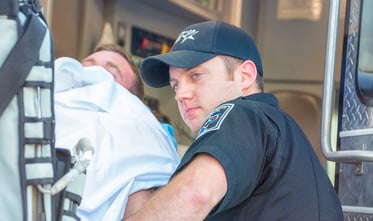
Casey wrapped up the podcast with the encouragement that while it may be impossible to eliminate some of the risk factors for EMS, awareness can be key to overcoming them. “No matter how smart you are, we all work in an environment that are ripe for stupidity: all seven factors, every call, just about. I was a GI Joe watcher when I was a kid, and GI Joe used to say that knowing is half the battle. A lot of these risk factors are movable objects in EMS. We can't get rid of timestamps and metrics. We can't get rid of the dark highway and the car crash. We can't get rid of information overload.
"But knowing is half the battle, and being aware and recognizing the risks and anticipating them, that goes a long way for conquering them. A deliberate practice is vital. Rushing equals chaos, and we don't want chaos. We want deliberate action and deliberate practice as well. Verbalization, delegation: vital. Nobody needs a checklist until what? Until they do. You can't pick and choose when you're going to pull your checklist out of your pocket. It's got to be habit. And then, finally, I say it all the time, but vital signs are vital signs. Don't ignore the objective things that are staring you in the face.”
To hear Kris talk more about the ups and downs of life in EMS, check out this blog post: Failures and Wins in EMS and How to Mentor the Next Generation.

December Recap After an incredibly busy events year with 102 conferences, trade shows, and sponsorships, December was on the slower side for us, with...

Editor's Note: In July 2025, EMS1 and Fitch & Associates released their annual EMS trend survey, What Paramedics Want, proudly sponsored by Pulsara....
![[PRESS RELEASE] Published Research Finds Up to 31% Faster STEMI Treatment Times in Rural Hospital Setting with Pulsara](https://www.pulsara.com/hubfs/_1_website-page-blog-assets/pulsara-hosp-teams-assign-cardio-stemi-rn-1200x701.jpg)
Published research shows how using Pulsara, alongside standardized field activation and a focus on stakeholder relationships, improves STEMI care and...